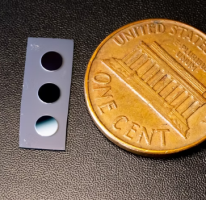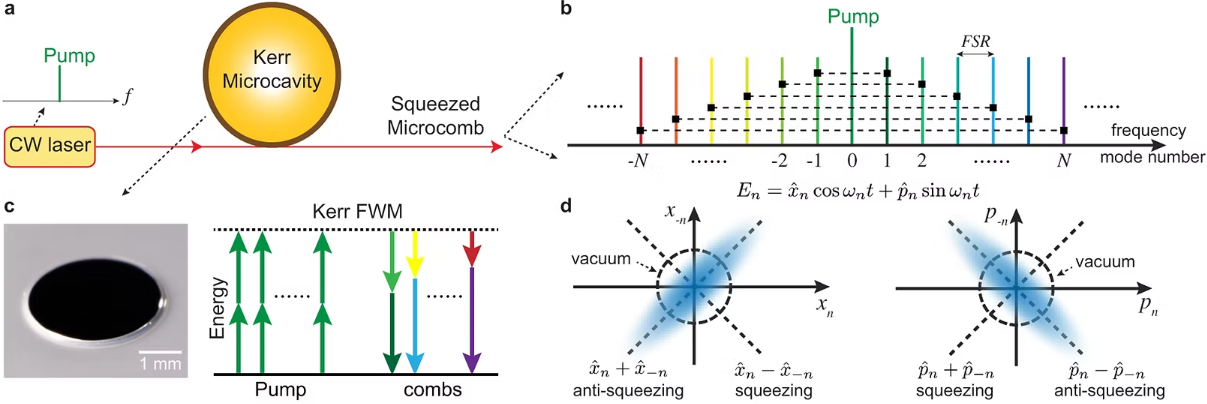Quantum Microcombs

Research Summary
Squeezing and quantum entanglement have been heavily pursued in the past few decades for their wide applications in quantum computing, communications, and sensing. For quantum technology to become a reality, it must undergo an evolution similar in kind to that of the first Bell Labs transistor into massive-scale modern integrated circuits. One of the most promising avenues to mimic such a transformative trajectory is the marriage of integrated photonics with quantum optics.
Our group is pursuing an integrated solution by using on-chip optical frequency combs. We recently pushed integrated microcombs into the deterministic quantum regime, where a single microresonator created many pairs of unconditional entangled comb modes (link). These quantum modes can serve as the building blocks for continuous-variable universal quantum computing, frequency-multiplexed quantum communications, and entangled-enhanced sensing.

Squeezed quantum microcombs. (a) Illustration of a Kerr microcavity pumped by a continuous-wave (cw) laser. (b) The Kerr nonlinearity creates unconditional EPR entanglement of the optical quadrature fields between frequency modes n and −n. (c) Image of the silica microresonator on a silicon chip and the photon conversion process in the microcavity. (d) Wave-function illustration of two-mode squeezing (EPR entanglement).